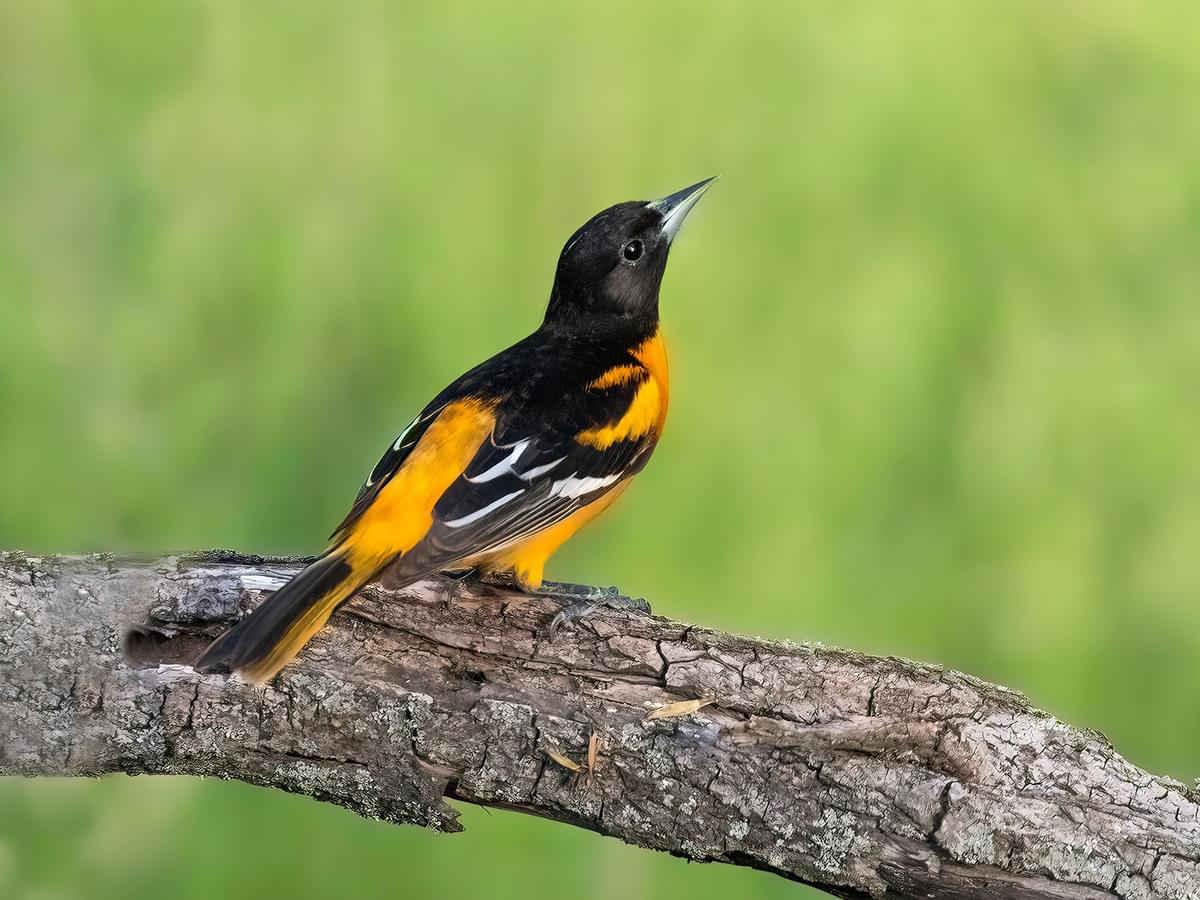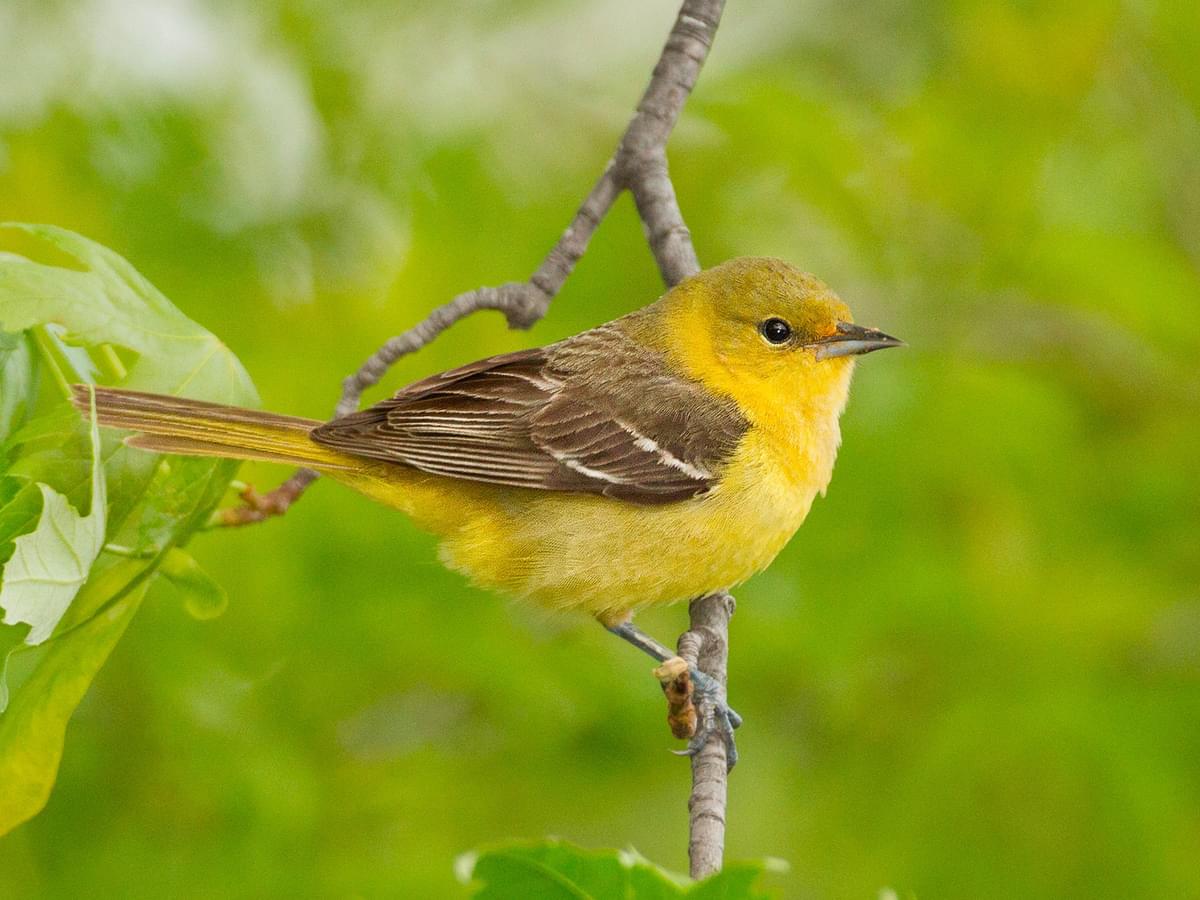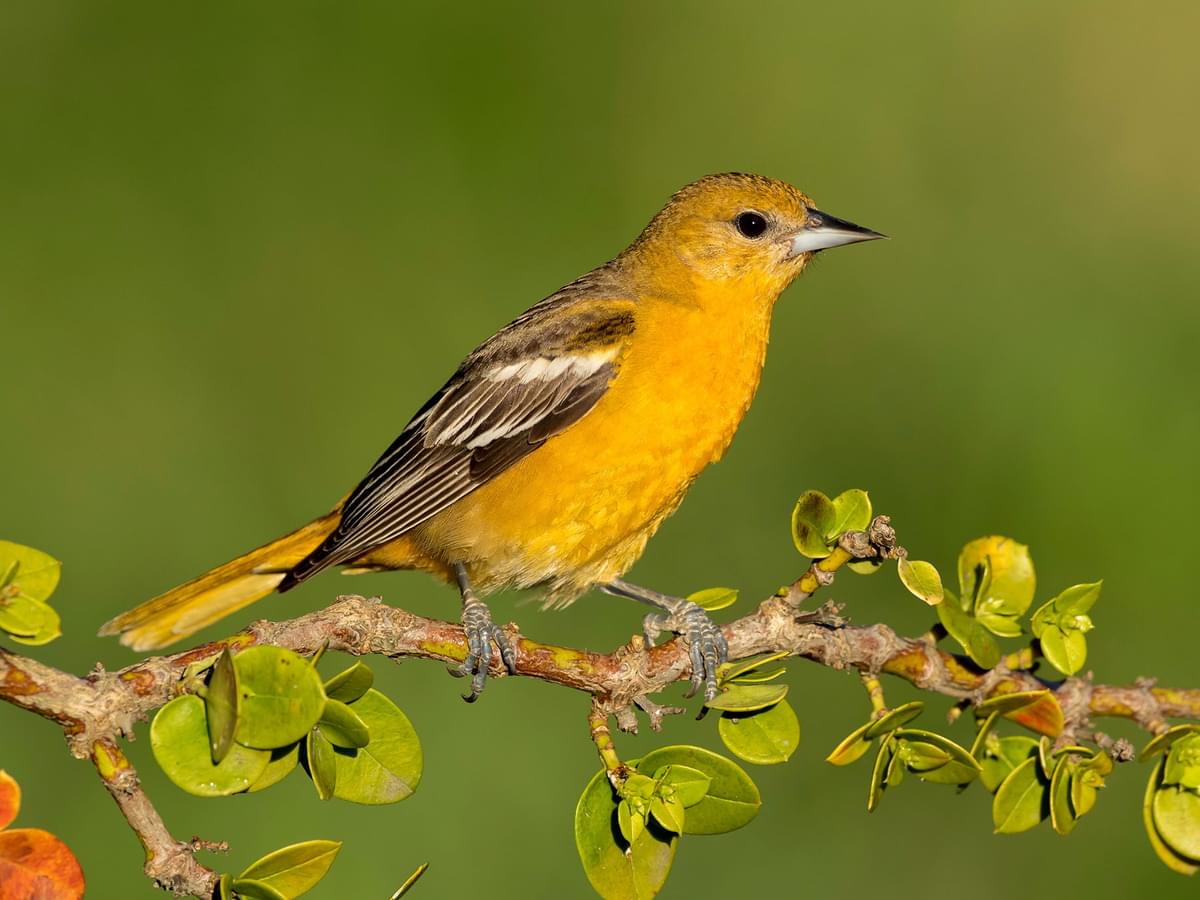Orchard Oriole or Baltimore Oriole: What Are The Differences?
Last updated: 23 January 2023

- Distribution Range differences
- Which is bigger, an Orchard Oriole or a Baltimore Oriole?
- Which is more common, Orchard Orioles or Baltimore Orioles?
- Other differences
- Do Orchard orioles and Baltimore orioles hybridize?
- Female Orchard Oriole vs female Baltimore Oriole
- Juvenile Orchard Oriole vs juvenile Baltimore Oriole
The Orchard Oriole and the Baltimore Orioles are both members of the same family, Icteridae, a family of passerine birds commonly referred to as the New World blackbirds.
The two species are both found in North America and share much of their eastern distribution range, so what are the differences between Orchard and Baltimore orioles?
While similar, these birds are not closely related. Male Baltimore orioles are larger, heavier, and brighter, with a bright, striking orange color. Male Orchard oriole males are primarily black and chestnut-brown, though the Mexican subspecies is a brighter orange.
The Orchard Oriole has a yellow-orange breast and black back, wings, and tail, with a black head for the male and a chestnut head for the female. The Baltimore Oriole, on the other hand, has a brighter orange breast and black head for the male and a yellow-orange breast and yellow head for the female.
The Baltimore oriole is the larger of the two birds, with a bulkier appearance. The Orchard oriole measures 7 to 8 inches (18 to 20 cm) in length, with a wingspan of around 10 inches (25 cm), whereas the Baltimore oriole measures around 8 to 9 inches (20 to 23 cm) in length, with a wingspan of around 12 inches (30 cm). They can weigh almost double that of the Orchard oriole in some cases.
There are a few other differences between Orchard and Baltimore orioles - so read on to find out!

Orchard Oriole

Baltimore Oriole
Distribution Range differences
Baltimore orioles
Baltimore orioles’ breeding range extends mostly east of the Rocky Mountains, from Saskatchewan in Canada and Montana in the US, south to Texas, and eastwards to most states.
Notable populations can be found in Ohio, Pennsylvania, Virginia, Carolina, and Maryland, with the Dakotas, Minnesota, Texas, and Maine forming the fringe of their range. They winter in the southern US and Gulf Coast.
Orchard orioles
The Orchard oriole’s breeding range is essentially very similar, stretching from southeastern Saskatchewan, Manitoba, Minnesota, Wisconsin, Maine, and Michigan in the north to the Atlantic Coast, Gulf Coast, and southeastern Texas in the south. They can also be found across much of northern Mexico, where Baltimore orioles are completely absent outside of the breeding season.
The western fringe of their range extends from extreme eastern New Mexico to Colorado and Wyoming.
The Orchard oriole’s range doesn’t extend quite as far north into Canada and covers central states like Colorado, where Baltimore orioles are rare. Overall, the Orchard oriole has a larger range in the south.

Close up of a male Baltimore oriole perched in a tree
Which is bigger, an Orchard Oriole or a Baltimore Oriole?
Baltimore orioles are larger and heavier than Orchard orioles. In some cases, they can weigh double. They definitely appear stockier and fuller, too.
Baltimore oriole measurements
- Baltimore oriole measure around 8 to 9 inches (20 to 23 cm) in length, with a wingspan of around 12 inches (30 cm). They weigh around 22.3 to 42 g (0.79 to 1.48 oz).
Orchard oriole
- The Orchard oriole measures 7 to 8 inches (18 to 20 cm) in length, with a wingspan of around 10 inches (25 cm). They weigh approximately 16 to 28 g (0.6 to 1.0 oz).

Male Orchard oriole perched on a branch
Which is more common, Orchard Orioles or Baltimore Orioles?
Baltimore orioles and Orchard orioles are both similar when it comes to their numbers, with populations ranging between 6 million and 12 million.
In fact, North American population estimations are near-identical, though the Orchard oriole is probably more common as it extends deeper into Mexico and Central America. As of 2022, neither species are considered threatened or endangered.
Other differences
Habitat
These orioles share similar habitats, including semi-open forested environments and plains.
Both rely primarily on deciduous trees, which are essential for their nests. The Baltimore oriole typically builds its nest in open forests and forest fringes, whereas the Orchard oriole prefers trees in more open ground.
Moreover, the Orchard oriole marginally prefers urban environments such as parks compared to the Baltimore oriole.
Both orioles construct remarkable hanging nests that are precariously attached to the branches of a deciduous tree. However, orchard orioles seem to strongly prefer nesting sites near water.
Another difference is the nest’s height - Baltimore orioles tend to build their nests high up in trees, whereas Orchard orioles don’t mind constructing their nests in the lower story.

Baltimore orioles have a much more vibrant plumage
Behavior
Baltimore orioles are more conspicuous with their brighter plumage and are more bullish and aggressive around feeders.
Both birds are acrobatic, but the Baltimore oriole is better known for its rapid mid-air maneuvers when hunting insects on the wing. In addition, the Baltimore oriole is a strong flyer and more conspicuous when airborne, whereas the Orchard oriole is lighter and more buoyant.
Both species are highly territorial in the breeding season but become more sociable in the breeding season. However, both species are considered largely independent, and most birds keep their distance from each other except when roosting.

The orange of an Orchard orioles plumage is much duller, nonetheless still fantastic
Song and vocalizations
A key between the two species is their songs. The Orchard Oriole produces a series of loud, clear whistles with phrasing similar to the American Robin.
The Baltimore Oriole has a buzzy flute-like song. Both songs are easily recognizable if you live somewhere with plenty of orioles. You could perhaps argue that the Baltimore oriole has a richer, more complex repertoire.
The females of both species sing, mainly during the breeding season. However, females sing less than males, and their songs are often more straightforward.

Baltimore oriole in full voice, singing from the tree
Migration
Both orioles are medium-distance migrants, with the majority heading to Mexico and most parts of Central America. Baltimore orioles also migrate across the Gulf of Mexico to the Greater and Lesser Antilles, where Orchard orioles are absent.
Orchard orioles head much further south than Baltimore orioles. Baltimore orioles rarely reach South America, whereas Orchard orioles winter in Columbia and Venezuela.
Systematics
The Icterus genus of the Icteridae family contains 33 strikingly similar-looking species. The Orchard oriole is actually the smallest member of the genus.
While some of these species are closely related and hybridize liberally, e.g., the Baltimore and Bullock’s orioles, the Orchard oriole is not especially related to the Baltimore oriole. There are no recorded hybridizations between the two birds - but that doesn’t mean it doesn’t happen.
Researchers are still trying to unravel the complex genetics of the large Icterus genus.

Orchard oriole perched on a branch
Do Orchard orioles and Baltimore orioles hybridize?
Unlike the Baltimire and Bullock’s orioles, the Orchard orioles don’t seem to hybridize with other members of the Icterus genus. There are no recorded hybrids of Baltimore and Orchard orioles.
Members of Icterus are strikingly similar, but Orchard and Baltimore orioles are only distantly genetically related.
Female Orchard Oriole vs female Baltimore Oriole
Comparing male orioles is much easier than comparing females! In both cases, the females are duller and lack much of the orange/yellow plumage of the males.
Female Orchard orioles are dull yellow and are almost entirely deficient of the male’s darker chestnut plumage. Female Baltimore orioles retain some of the orange tints of the male’s plumage but are primarily yellow.
Both females lack much of the darker black plumage of the male.

Female Orchard Oriole

Female Baltimore Oriole
Juvenile Orchard Oriole vs juvenile Baltimore Oriole
The juveniles of both species look relatively similar to the female, lacking the darker plumage of mature males.
Baltimore oriole juveniles grow quickly and have a larger overall appearance, but otherwise, you’d be hard-pressed to reliably identify a juvenile Baltimore oriole from a juvenile Orchard oriole.
However, one reliable difference is that Baltimore orioles develop a black neck patch, which Orchard orioles lack.

Immature Orchard Oriole (male)

Juvenile, or immature Baltimore Oriole (male)
On this page
- Distribution Range differences
- Which is bigger, an Orchard Oriole or a Baltimore Oriole?
- Which is more common, Orchard Orioles or Baltimore Orioles?
- Other differences
- Do Orchard orioles and Baltimore orioles hybridize?
- Female Orchard Oriole vs female Baltimore Oriole
- Juvenile Orchard Oriole vs juvenile Baltimore Oriole






